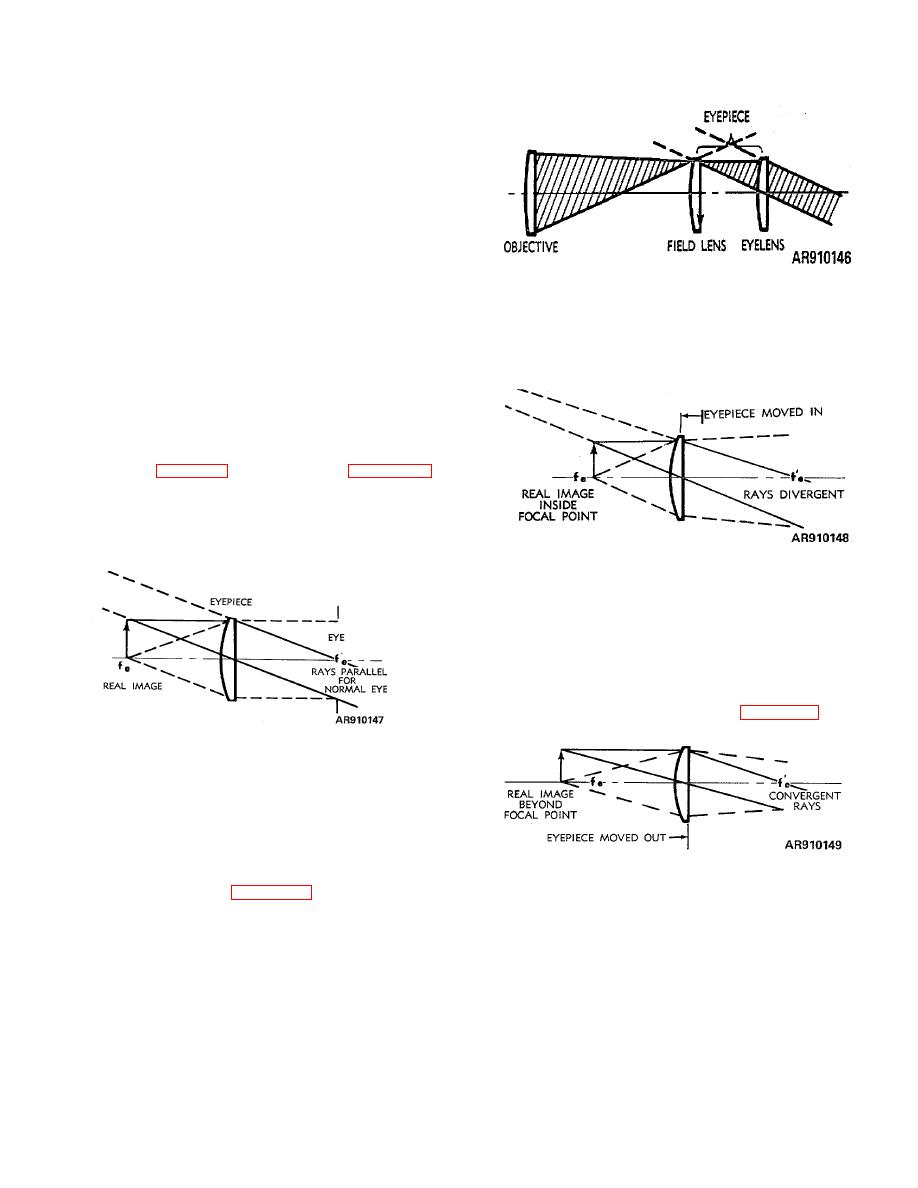 |
|||
|
|
|||
|
|
|||
| ||||||||||
|
|
 TM 9-258
crosshair mounted on a reticle holder ring. If the eyelens
and the field lens are of the same power (focal length)
and the field lens lies in both the image plane and the
first focal plane of the eyelens, the image will be viewed
at infinity (without requiring accommodation by the eye).
NOTE
A field lens in the image plane shortens
eye relief by shifting the plane of the exit
pupil without affecting its size (para 5-
27b). The field lens also increases the
apparent field of the eyepiece.
Figure 5-18. Function of field lens in eyepiece.
Section V. ADJUSTMENTS
5-14.
Diopter Movement.
a. Zero Setting (Normal). In a well-adjusted
instrument the beams of light from each point in a distant
field or target will emerge from the eyepiece (of focal
length fe) as a beam of parallel rays. This is a zero
diopter setting (para 10-1), as diagramed in figure 5-19,
and will feed the eye with the same parallel light as that
received from distant points by the unaided eye. The
normal or emmetropic eye, therefore, can view the field
through the instrument without accommodation.
Figure 5-20. Minus setting for shortsighted eye
c. Plus Setting (Farsighted ). Farsightedness
or hypermetropia results in image formation in back of
the retina. Movement of the eyepiece away from the
recticle and the real image under observation, will cause
rays emerging from the eyepiece to coverge so that the
farsighted eye can focus the image clearly. This is a
plus diopter setting and is illustrated in figure 5-21.
Figure 5-19. Zero diopter setting.
b. Minus Setting (Shortsighted).
The
shortsighted or myopic eye will form an image in front of
the retina. Movement of the eyepiece toward the reticle
and the real image under observation, will cause
emergent rays from the eyepiece to diverge and correct
for the deficiency of the eye. This is a minus diopter
Figure 5-21. Plus setting for farsighted eye.
setting and is diagramed in figure 5-20.
d. Low-powered Instruments.
If
the
instrument is less than 4x, the eyepiece can be fixed
focus for satisfactory use. This means adjusting the
5-10
|
|
Privacy Statement - Press Release - Copyright Information. - Contact Us |